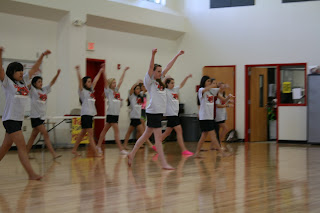We learned the art of photo captioning in photojournalism this past week and took the lesson to use, going round the school taking pictures of various activities. Here is my favorite of the examples, I just like the movement. Also Kaitlyn Plasters is awesome, but that's neither here nor there.
Moves like Plasters Practicing their step-and-drag move, senior Kaitlyn Plasters leads the dance as the class learns a sequence to Maroon 5’s “Moves Like Jagger.” The dance class learned one dance every two weeks and test time was about to draw near. “I really have a passion for dancing. Some say I’m a natural at it,” Plasters said. Photo credit Erin Powers.





